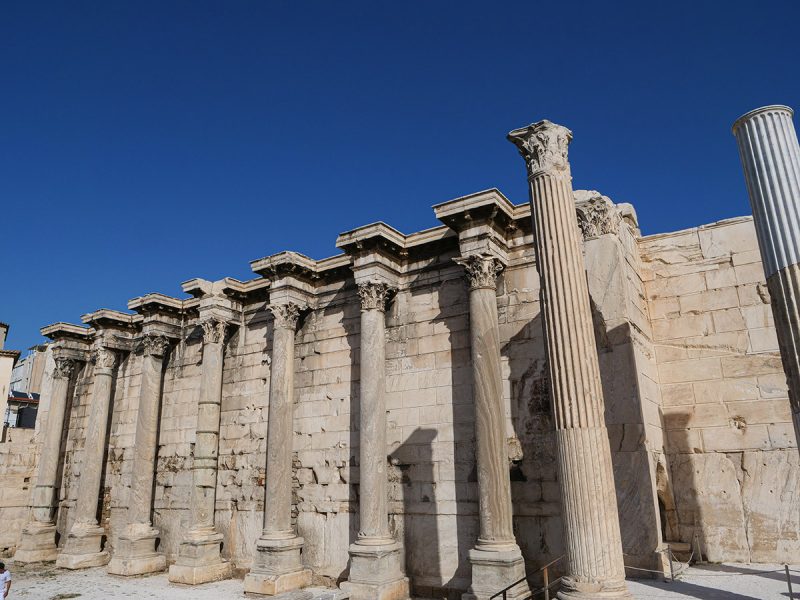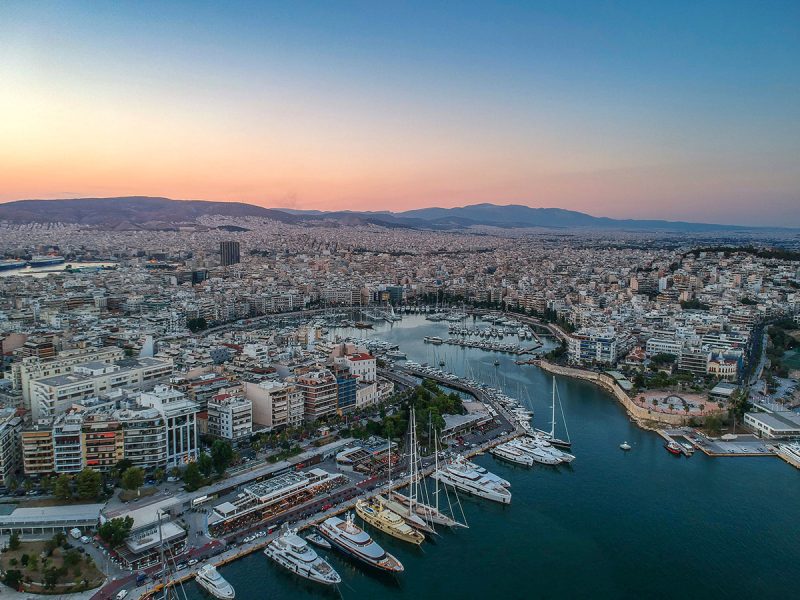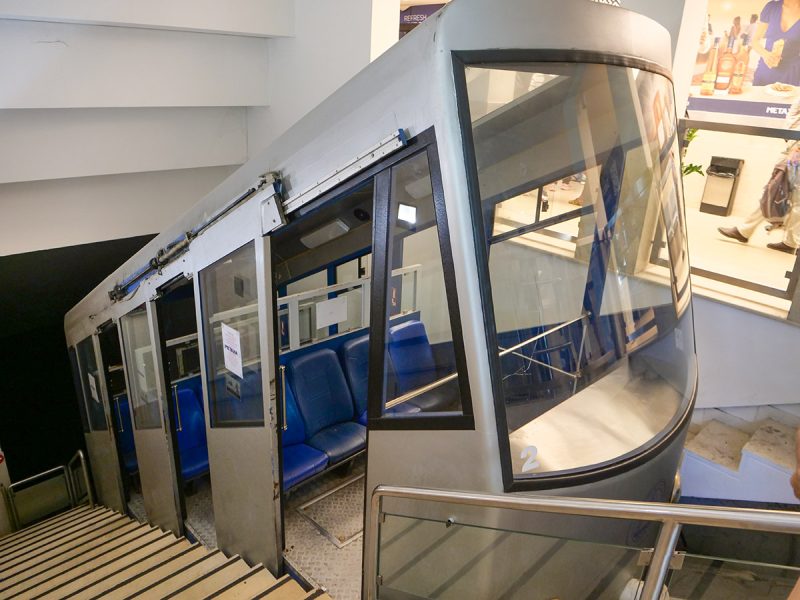Athens, the cradle of Western civilization, offers a captivating blend of ancient history and modern vibrancy. Two days in this iconic Greek capital provides just enough time to experience its most significant sights and cultural treasures. Visitors can explore world-renowned archaeological sites, savor authentic Greek cuisine, and immerse themselves in the city’s lively atmosphere.
From the majestic Acropolis to the bustling Plaka district, Athens presents a diverse array of attractions. Travelers can witness breathtaking ancient ruins, wander through charming neighborhoods, and enjoy panoramic views of the city. With careful planning, 2 days in Athens allows for a comprehensive taste of the classical and contemporary sides of the city.
Key Takeaways
- Athens combines ancient wonders and modern attractions for a memorable two-day visit
- The Acropolis and surrounding archaeological sites showcase Greece’s rich history
- Exploring local neighborhoods and cuisine provides insight into contemporary Athenian life


Planning Your Trip to Athens
Athens offers a wealth of historical sites and cultural experiences. Proper planning ensures you make the most of your 2-day visit to this ancient city.
How to Get to Athens
Athens International Airport serves as the main gateway to the Greek capital. Direct flights connect Athens to major European cities and some international destinations. From the airport, the metro provides a convenient 40 minute ride to the city center.
Taxis are readily available but can be more expensive. Many visitors also arrive by ferry at Piraeus port, especially those island-hopping in Greece.
Booking flights in advance often results in better deals. Consider combining Athens with visits to nearby islands for a more comprehensive Greek experience.


Best Time to Visit Athens
Spring (April to mid-June) and Fall (September to November) are ideal for visiting Athens. These seasons offer pleasant temperatures and fewer crowds.
Summer (mid-June to August) brings hot weather and peak tourist numbers. While lively, this period can be uncomfortably warm for sightseeing.
Winter (December to March) sees cooler temperatures and occasional rain. Some attractions may have reduced hours, but prices are lower and crowds are sparse.
Cultural events and festivals occur year-round. The Athens and Epidaurus Festival, held from June to August, showcases Greek and international performances.
Navigating the City
Athens boasts an efficient public transportation system. The metro is fast and connects major attractions. Buses and trams complement the network, reaching areas not served by the metro.
A 3-day tourist ticket covers unlimited rides on all public transport, including the airport transfer. It’s a cost-effective option for exploring the city.
Walking is ideal for short distances in the historic center. Many major sites are within walking distance of each other.
Taxis are plentiful but ensure that the meter is used. Renting a car is not advisable within the city due to traffic and limited parking. It’s more useful for day trips outside Athens.


Where to Stay in Athens
Consider factors like proximity to attractions, public transport access, and your budget when choosing accommodation. Booking in advance is advisable, especially during peak seasons. Syntagma Square, the city’s central square, offers convenience and easy access to shopping areas.
The NEW Hotel captivates visitors with its avant-garde design, masterfully conceived by Brazilian visionaries Fernando and Humberto Campana. The brothers boldly reimagined the former Olympic Palace Hotel, incorporating salvaged materials from the original building into striking art installations and custom-made furniture pieces throughout the property.
Every corner tells a story, from handcrafted wooden walls assembled from reclaimed furniture to unconventional lobby chairs fashioned from disassembled vintage items. The hotel’s 79 rooms and suites feature dramatic sculptural walls and decorative elements that create an artistic dialogue between luxury and sustainability.




At its spectacular rooftop Art Lounge on the 7th floor, guests can savor refined Mediterranean cuisine and artisanal cocktails while admiring the illuminated Acropolis against the Athenian skyline. The stylish Lobby Bar is open for breakfast, lunch and weekend brunch.
The property’s wellness facilities include a tranquil spa offering treatments inspired by ancient Greek healing practices and a well-equipped fitness center featuring cutting-edge exercise equipment.


Day 1: Exploring Ancient Athens
Athens offers a journey through millennia of history. The city’s ancient sites transport visitors to the cradle of Western civilization, showcasing architectural marvels and artistic treasures.
The Acropolis and Surrounding Monuments
The Acropolis, Athens’ crown jewel, stands atop a rocky hill overlooking the city. This ancient citadel houses the iconic Parthenon, dedicated to the goddess Athena. Visitors can explore the Propylaea, the monumental gateway, and admire the intricate friezes adorning the structures.
The Temple of Athena Nike, perched on the Southwest edge, offers stunning views of the city below. The Erechtheion, with its famous Caryatid porch, showcases exquisite craftsmanship.
For optimal viewing, arrive early to beat the crowds and heat. The nearby Acropolis Museum displays artifacts found on the site, providing context to the ruins above.


The Ancient Agora
Below the Acropolis lies the Ancient Agora, once the heart of Athenian public life. This sprawling complex served as a marketplace, political center, and social hub. The well-preserved Temple of Hephaestus dominates the site, its Doric columns a testament to ancient Greek architecture.
The Stoa of Attalos, a reconstructed colonnaded building, now houses the Agora Museum. Its exhibits offer insights into daily life in ancient Athens.
Visitors can wander the paths once trodden by Socrates and Plato, imagining the bustling scenes of commerce and debate that once filled this space.
Plaka Neighborhood
Adjacent to the archaeological sites, Plaka charms with its narrow streets and neoclassical architecture. This historic district offers a blend of old-world charm and modern amenities.
Visitors can browse shops selling traditional Greek products, from olive oil to handmade sandals. Tavernas serve authentic Greek cuisine, perfect for a leisurely lunch break.
Notable spots nearby include the Tower of the Winds, an ancient water clock, and the picturesque Anafiotika sub-neighborhood, reminiscent of a Greek island village.


National Archaeological Museum
The National Archaeological Museum houses Greece’s largest collection of ancient artifacts. Its vast holdings span prehistory to late antiquity.
Highlights include the gold Mask of Agamemnon, the bronze statue of Poseidon, and the Antikythera Mechanism, an ancient analog computer.
The museum’s Mycenaean collection offers insights into Greece’s Bronze Age civilization. The vase collection showcases the evolution of Greek pottery and painting styles.
Plan to spend at least two hours exploring the exhibits. The museum provides a comprehensive overview of Greek art and archaeology, complementing the day’s visits to ancient sites.


Lycabettus Hill
In the evening, head to Lycabettus Hill for panoramic views of Athens city center. The highest point in the city, Mount Lycabettus is 277 meters above sea level.
If you’re feeling energetic, you can walk all the way up. Alternatively, take the funicular railway as we did!


Day 2: Discovering Modern Athens
Athens seamlessly blends ancient history with contemporary culture. On your second day in Athens, explore vibrant squares, bustling markets, and trendy neighborhoods while savoring local cuisine and taking in panoramic city views.
Syntagma Square and Parliament
Syntagma Square forms the heart of modern Athens. This lively plaza buzzes with activity, surrounded by cafes and shops. The Hellenic Parliament building dominates the eastern side of the square.
Don’t miss the ceremonial changing of the guard in front of the Tomb of the Unknown Soldier. This impressive ritual occurs hourly, with elaborately dressed Evzones (members of the Presidential Guard) performing precise movements.
The nearby Athens National Garden offers a peaceful retreat from the urban bustle. Stroll through its shaded paths, admiring diverse plant species and ancient ruins scattered throughout the grounds. Stop for a lemonade at the park’s cafe terrace if you need a rest.


Monastiraki and the Flea Market
Monastiraki Square pulses with energy, blending old and new Athens. The area’s famous flea market sprawls across nearby streets, offering an eclectic mix of goods.
Browse stalls selling antiques, handicrafts, and vintage items. Haggling is expected, so don’t hesitate to negotiate prices.
Grab a quick bite from one of the many street food vendors. Try a traditional Greek snack like koulouri (sesame bread rings) or souvlaki (grilled meat skewers).


Culinary Delights and Rooftop Drinks
Athens boasts a thriving food scene. Sample modern Greek cuisine at innovative restaurants that reinvent traditional recipes with contemporary flair.
For lunch, try a trendy mezedopoleio (Greek meze restaurant) serving small plates perfect for sharing. Taste dishes like fava bean puree, grilled octopus, or stuffed vine leaves.
Those seeking a unique experience should visit Little Kook or Fairytale Athens cafe. These whimsical cafes change their elaborate decorations seasonally, creating a magical atmosphere.
They are particularly popular during holidays like Christmas and Halloween. Fairytale Athens is not as well known and consequently a lot less crowded than Little Kook.
As evening approaches, head to a rooftop bar for stunning views of the Acropolis illuminated against the night sky. Sip on crafted cocktails while taking in the cityscape.


Cultural Experiences
Immerse yourself in Athens’ vibrant arts scene. Visit cutting-edge galleries showcasing works by emerging Greek artists.
Catch a performance at the Onassis Stegi, a cultural center hosting theater, dance, and music events. The building’s striking modern architecture contrasts with the ancient monuments nearby.
End your day with a stroll through the hip Psyri neighborhood. This former industrial area now brims with street art, quirky bars, and live music venues.
Notable Landmarks in Athens
Athens boasts an impressive array of ancient landmarks that showcase its rich history and architectural prowess. These iconic structures have stood the test of time, offering visitors a glimpse into the city’s glorious past.
Temple of Olympian Zeus
The Temple of Olympian Zeus stands as a testament to ancient Greek ambition and craftsmanship. Construction began in the 6th century BCE but wasn’t completed until nearly 700 years later under Roman rule. Originally, the temple featured 104 colossal columns, each standing 17 meters tall.
Today, only 15 columns are standing, yet they still convey the temple’s immense scale and grandeur. The site includes informative plaques detailing the temple’s history and significance.
Visitors can marvel at the intricate Corinthian capitals adorning the columns and imagine the temple in its full glory. The backdrop of the Acropolis adds to the scenic beauty of this archaeological wonder.
Hadrian’s Arch
Hadrian’s Arch, erected in 131 CE, served as a gateway between the ancient city and the Roman city of Athens. This monumental arch honors the Roman Emperor Hadrian, a great admirer of Greek culture.
The arch stands 18 meters high and 13.5 meters wide, constructed entirely of Pentelic marble. Its design blends Greek and Roman architectural elements, reflecting the cultural fusion of the time.
Inscriptions on both sides of the arch provide insight into its purpose. One side facing the Acropolis reads “This is Athens, the ancient city of Theseus,” while the other proclaims “This is the city of Hadrian, not of Theseus.”


Roman Agora
The Roman Agora, constructed between 19 and 11 BCE, served as the commercial and administrative center of Roman Athens. This well-preserved complex offers a fascinating glimpse into daily life during Roman rule.
Key features include:
- The Gate of Athena Archegetis: A monumental entrance adorned with four Doric columns.
- The Tower of the Winds: An octagonal marble tower also known as the Horologion of Andronikos Cyrrhestes, that functioned as a weather station and time estimator.
- Remains of shops and other public buildings.
Visitors can explore the ancient marketplace, walking on the same stones trod by Roman citizens centuries ago. Informative signs throughout the site explain the function and history of various structures.


Odeon of Herodes Atticus
The Odeon of Herodes Atticus, built in 161 AD, is a stunning ancient theater nestled on the Southwest slope of the Acropolis. This well-preserved structure continues to host performances, blending ancient architecture with modern entertainment.
The theater’s steep semicircular seating area can accommodate up to 5,000 spectators. Its excellent acoustics make it an ideal venue for concerts and theatrical productions.
During Summer evenings, the Odeon comes alive with performances ranging from classical music to modern plays. Attending an event here offers a unique opportunity to experience ancient Greek culture in a living, breathing monument.
Visitors can also explore the theater during daytime hours, admiring its impressive architecture and imagining the performances that have graced its stage over the millennia.


Additional Experiences in Athens
Athens offers a wealth of activities beyond its ancient ruins and historical sites. Visitors can explore nearby attractions, enjoy vibrant nightlife, and indulge in retail therapy.
Nearby Excursions
Piraeus, Athens’ port, serves as a gateway for day trips to nearby islands. Travelers can take a ferry to Aegina, known for its pistachio groves and Temple of Aphaia. Hydra, a picturesque Greek island is car-free and has charming harbor views.
For those preferring to stay on the mainland, Cape Sounion is a must-visit. Located about 70 km from Athens, it’s home to the Temple of Poseidon perched dramatically on a cliff overlooking the Aegean Sea. The sunset views here are particularly stunning.
Evening Entertainment
Athens comes alive at night with a diverse range of entertainment options. The Gazi district is a hotspot for nightclubs and bars, catering to various musical tastes. For a more traditional experience, visitors can enjoy a Greek music and dance show in the Plaka neighborhood.


Shopping in Athens
Athens offers excellent shopping opportunities for all budgets. The upscale Kolonaki district is home to designer boutiques and high-end Greek fashion labels. For more affordable options, Ermou Street is the main shopping thoroughfare, featuring international brands and local shops.
Monastiraki Flea Market is perfect for finding unique souvenirs, antiques, and traditional Greek products. It’s especially lively on Sundays. Food lovers should visit Athens Central Market at Armodiou 37 to sample local delicacies and purchase Greek specialties like olive oil, honey, and spices.
For a modern shopping experience, The Mall Athens offers a wide range of international and Greek brands under one roof.


Practical Information for Visiting Athens
Athens blends ancient history with modern conveniences. Visitors should be aware of local customs, emergency procedures, and payment methods to ensure a smooth stay in the Greek capital.
Local Customs and Etiquette
Greeks are known for their warm hospitality. Greet locals with a friendly “Kalimera” (good morning) or “Kalispera” (good evening). Dress modestly when visiting churches or monasteries.
Meal times in Athens tend to be later than in many Western countries. Lunch is typically served between 2 pm and 4 pm, while dinner starts around 9 pm. Tipping is appreciated in restaurants, however this is not compulsory.
Public displays of affection are generally acceptable. Smoking is prohibited in indoor public spaces, though enforcement can be lax in some establishments.


Emergency Information
In case of emergencies, dial 112 for the pan-European emergency number. For specific services:
- Police: 100
- Ambulance: 166
- Fire Department: 199
Athens’ main hospitals include Evangelismos General Hospital and Sotiria General Hospital. Most pharmacies operate during regular business hours, with 24-hour options available.
The U.S. Embassy in Athens is located at 91 Vasilisis Sofias Avenue. It’s advisable to keep a copy of your passport and travel documents separate from the originals.
Currency and Payments
Greece uses the Euro (€) as its currency. ATMs are widely available throughout Athens, including at Athens International Airport. Major credit cards are accepted in most hotels, restaurants, and shops.
It’s wise to carry some cash for small purchases and in case of technical issues with card payments. Currency exchange services are available at banks, hotels, and dedicated exchange offices.
Many businesses in Athens, especially in tourist areas, accept contactless payments. Inform your bank of your travel plans to avoid any issues with your cards while abroad.
Read Next:








